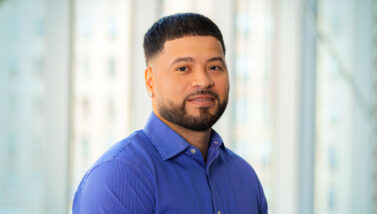LEARNING TOGETHER Vol 2

STUDY SHOWS VIABILITY OF ONLINE INTERPROFESSIONAL NURSING EDUCATION
A paper written by Patricia Cannistraci, assistant dean of the School of Nursing, and Bonny Kehm, a faculty program director, based on their study on interprofessional education (IPE) received the United States Distance Learning Association’s (USDLA) International Quality Research Paper Award, and was published in the April 2018 issue of the Journal of Nursing Education. IPE is a team-based approach to learning where students from two or more health care professions learn together during their professional education. The Institute of Medicine, the World Health Organization, and the Patient Protection and Affordable Care Act approve of this practice because it encourages health care professionals to reassess how they work with patients and each other.
Cannistraci and Kehm wanted to show that it was possible to have an interprofessional education experience at an exclusively online college. “There is a gap in the literature,” says Kehm, referring to the lack of research showing online schools that successfully implement IPE. Cannistraci and Kehm sought to change that. “Our goal is to move interprofessional education from a novelty experience for the nursing student to the norm in nursing curriculum,” says Cannistraci. Their three-phase study included Excelsior College’s School of Nursing and School of Health Sciences as well as The Sage Colleges Nutrition Sciences Dietetic Internship program.
Ninety-two students (53 nursing students, 30 nutrition students, and 9 health sciences students) were assigned to teams of 9–10 students to equally distribute the professions, with a military or veteran student in each of the groups, too. In phase I of the study, each student was assigned to watch the PBS open-access movie “Poor Kids,” a 45-minute documentary following three families through their experience of homelessness. This was in preparation for phase II, where students would meet for a weeklong discussion hosted through Moodle, an open-access learning management system.
Each student signed a consent to participate in the study, which contained a pre-post test. Once in the Moodle room, students responded to five discussion questions which included, “How would these families be likely to enter ‘the system’ of care, in other words, meet you and the types of service you would provide? What would the family experience look like?” and “What views shared by members on your team, from other disciplines, helped to deepen your understanding of health and societal issues faced by children growing up in poverty?” Faculty participated in the group discussion to expand and deepen the dialogue among students. In phase III, the formal IPE experience ended and students returned to working in their discipline-specific course.
Eighty-eight percent of the 92 participants completed the pre-post survey, which measured how confident the student was in the subject matter and the other professions in their group. Cannistraci and Kehm discovered there was a statistically significant increase in self-reported confidence across all questions of the survey. “The results are encouraging because they support the notion that the IPE educational experience significantly improves student confidence in understanding and performing on an interprofessional team,” says Kehm.
As a result of the experience, many students reflected upon their interprofessional teamwork with a deeper understanding of specific provider roles. Student comments include, “An important lesson that I learned is that working as a team promotes better patient outcomes and a more successful plan of care,” and “Every professional on my team had their own opinion that tied to the overall topic of concern.”
Cannistraci and Kehm summarized their study in a manuscript which they then submitted to the USDLA. The International Quality Research Paper Award, given to the authors of a research paper that advances the field of distance education, was presented in May at the USDLA International Awards Ceremony during the annual conference. You can read Cannistraci’s and Kehm’s paper, “Difficult to doable: Interprofessional collaborative practice in distance education,” in the Excelsior College library.


